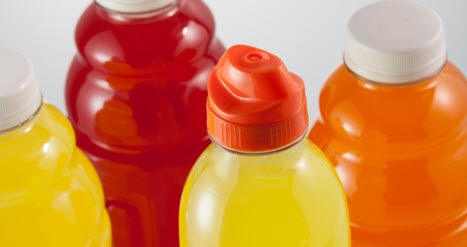In a world filled with convenient, packaged foods and quick, ready-to-eat meals, it’s important to remember that what seems helpful can actually sometimes be harmful.
Food additives can create bright, enticing colors, preserve ingredient freshness, protect against contamination and add appealing flavors. But they can also contain hazardous chemicals that may be harmful to your health. Let’s explore five common food additives and why you should avoid them:
1. Artificial sweeteners:
- Aspartame is a very low-calorie additive found in sugar-free drinks, gum, candies, yogurt and more. Aspartame consumption can trigger headaches, pain and nausea. Certain individuals should completely avoid aspartame, including those with phenylketonuria (a genetic disorder) and advanced liver disease, as well as pregnant women.
- Sucralose is another artificial sweetener, made from chemically modified sugar molecules. Sucralose may trigger unpleasant gastrointestinal side effects in some people, as well as skin and respiratory irritations. Animal studies involving sucralose have found that it may reduce the amount of beneficial bacteria in the gut and interfere with the absorption of medications.
Tip: Look for products sweetened with stevia or xylitol instead, like Spry Chewing Gum.
2. Monosodium glutamate (MSG): MSG is a popular flavor enhancer that’s probably most known for its inclusion in Asian dishes. But MSG is also found in many other foods, from bouillon cubes to barbecue sauce. Those who are sensitive to the processed glutamic acid in MSG can experience headaches, dizziness and asthma.
Tip: Be on the lookout for products labeled “No Added MSG” if possible. Scour the ingredient lists of other foods for monosodium glutamate or words like calcium glutamate, monopotassium glutamate, magnesium glutamate, mono-ammonium glutamate, natrium glutamate, yeast extract, autolyzed yeast, calcium caseinate, sodium caseinate, yeast nutrient, yeast food, gelatin, soy protein, soy protein concentrate and soy protein isolate. (Bad news: this is just a partial list of potential MSG-containing ingredients.)
3. Sodium nitrite: This food additive is used in many packaged meat and fish products (hot dogs, deli meat, etc.) to preserve color and prevent the growth of the bacteria responsible for botulism. Sodium nitrite may be a trigger food for those who experience migraines. Although the substance can be very toxic in large amounts, it would be difficult to ingest enough to cause immediate harm. However, sodium nitrite may release carcinogenic byproducts known as nitrosamines into your intestines during digestion ““ especially if your meat is overcooked or charred. Interestingly, certain antioxidants such as vitamin C and vitamin E can help prevent the formation of nitrosamines and are often included in meat products for this purpose.
Tip: Go for fresh cuts of meat – if you must buy pre-packaged products, look for items that are nitrate/nitrite free, like Golden Valley All-Natural Turkey Jerky.
4. Artificial dyes: We’ve discussed the potential dangers of food dyes before – but here’s a quick refresher course. Blue 1, Red 40 and Yellow 6 ““ three of the most popular food dye additives ““ are actually made from petroleum. They may contribute to a wide range of unpleasant side effects, including stomach upset, allergic reactions and hyperactivity.
Tip: Opt for food and drinks made with natural flavors and colors, like Annie’s Mac & Cheese. (Unlike conventional mac & cheese, the yellow-ish orange color of this comfort food comes from REAL aged cheddar!)
5. Hydrolyzed vegetable protein (HVP) or hydrolyzed plant protein: If you’re sensitive to MSG, you’re also likely sensitive to HVP. This is because HVP is actually a hidden source of MSG. Hydrolyzed vegetable protein is made from soy, wheat or corn that is boiled in hydrochloric acid. This flavor enhancer is found in thousands of food products, from veggie burgers to soups. HVP carries many of the same side effects as MSG, including nausea and headaches.
Tip: Love veggie burgers? Make your own! These Squash-Nut Burger Patties are a big hit – or try your hand at making these hearty Black Bean Burgers.





